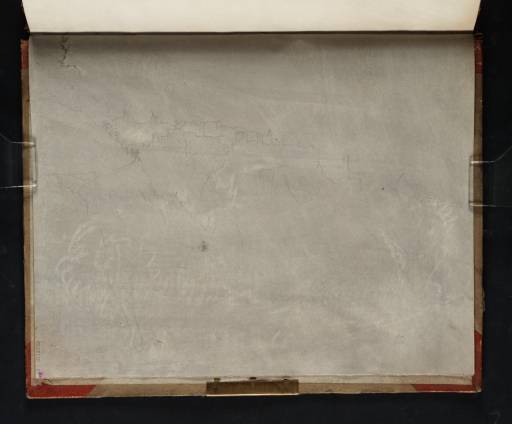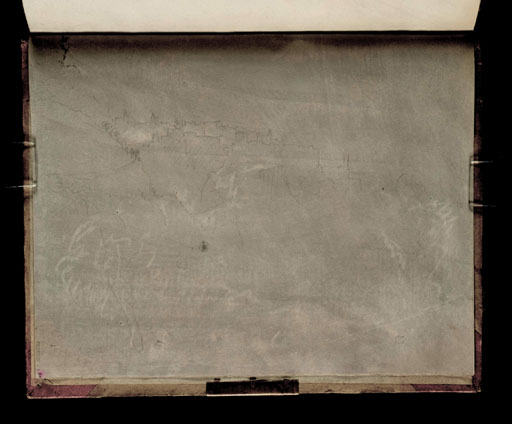Joseph Mallord William Turner View of Tivoli, with the So-Called Temple of Vesta 1819
Image 1 of 2
Joseph Mallord William Turner,
View of Tivoli, with the So-Called Temple of Vesta
1819
Joseph Mallord William Turner 1775–1851
Folio 80 Recto:
View of Tivoli, with the So-Called Temple of Vesta 1819
D15552
Turner Bequest CLXXXIII 80
Turner Bequest CLXXXIII 80
Pencil and grey watercolour wash on white wove paper, 200 x 253 mm
Inscribed by ?John Ruskin in faded red ink ‘80’ bottom left, descending left-hand edge, and by an unknown hand in pencil ‘80’ bottom left, descending left-hand edge
Stamped in black ‘CLXXXIII 80’ bottom left, descending left-hand edge
Inscribed by ?John Ruskin in faded red ink ‘80’ bottom left, descending left-hand edge, and by an unknown hand in pencil ‘80’ bottom left, descending left-hand edge
Stamped in black ‘CLXXXIII 80’ bottom left, descending left-hand edge
Accepted by the nation as part of the Turner Bequest 1856
References
1909
A.J. Finberg, A Complete Inventory of the Drawings of the Turner Bequest, London 1909, vol.I, p.541, as ‘Tivoli, with the Temple of the Sibyl’.
This page contains a distant view of Tivoli seen from the road skirting the end of the valley to the north-east. Turner’s viewpoint may be the Convent of Sant’Antonio, also known as the Villa d’Orazio (Villa of Horace).1 Monte Catillo rises on the left-hand of the prospect, whilst visible in the centre is the so-called Temple of Vesta, a circular ruin dating from the first century BC, which stands on the edge of the gorge at the northern edge of the town, near the former falling point of the ‘Great Cascade’ of the River Aniene. The adjacent campanile to the right belongs to the Church of San Giorgio, which until the end of the nineteenth century incorporated the remains of another ancient edifice, the so-called Temple of the Sibyl. Silhouetted against the horizon on the far right-hand side meanwhile is a medieval watch-tower positioned above the falls of the cascatelli, or lesser cascades. Similar vistas from the end of the valley can be seen on folios 2, 18, 22, 33, 34, 35, 78 (D15468, D15488, D15488, D15500, D15501, D15502, D15550), as well as the Tivoli and Rome sketchbook (Tate D15000–D15005 and D15092; Turner Bequest 40–42 verso and 86a), and in a watercolour study in the Naples: Rome C. Studies sketchbook (Tate D16116; Turner Bequest CLXXXVII 28). Today, the same view of Tivoli is dominated by the great waterfall of the Villa Gregoriana, created by the diversion of the river away from the residential district after a devastating flood in 1826.
Like many drawings within this sketchbook, the composition has been executed over a washed grey background and Turner has created highlights by rubbing or lifting out the wash to reveal the white paper beneath.
Verso:
Blank, except for traces of grey watercolour wash
Blank, except for traces of grey watercolour wash
Nicola Moorby
February 2010
How to cite
Nicola Moorby, ‘View of Tivoli, with the So-Called Temple of Vesta 1819 by Joseph Mallord William Turner’, catalogue entry, February 2010, in David Blayney Brown (ed.), J.M.W. Turner: Sketchbooks, Drawings and Watercolours, Tate Research Publication, December 2012, https://www


